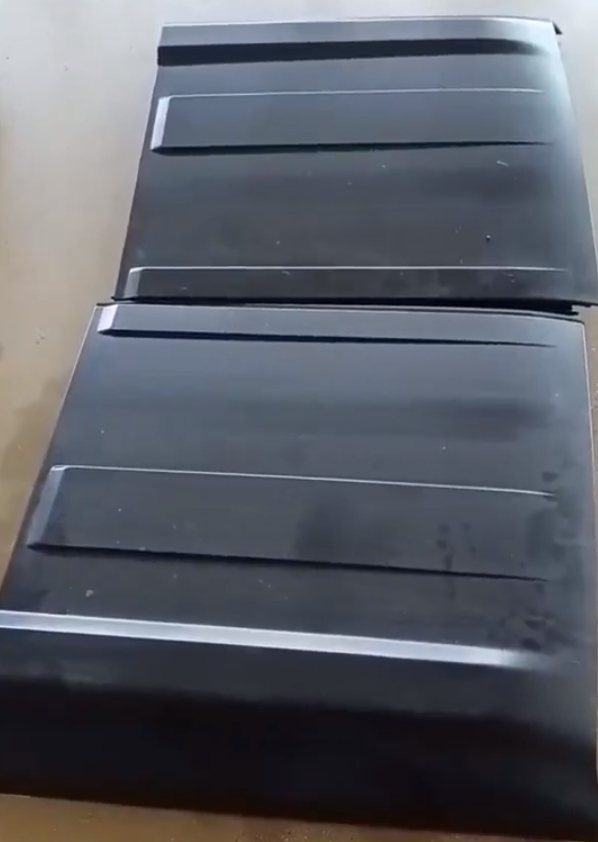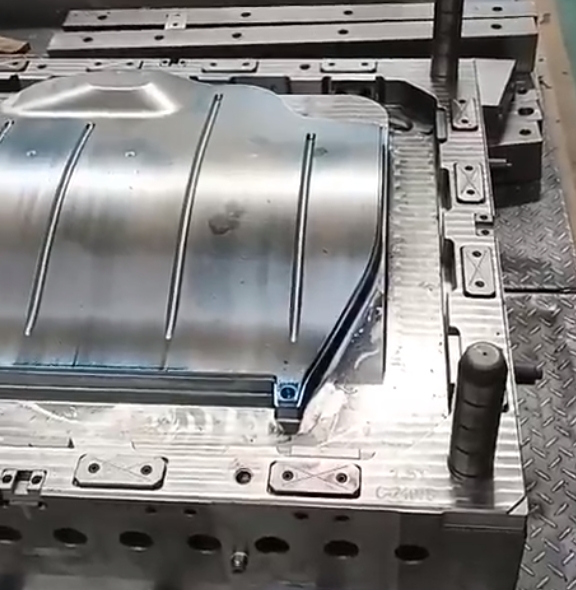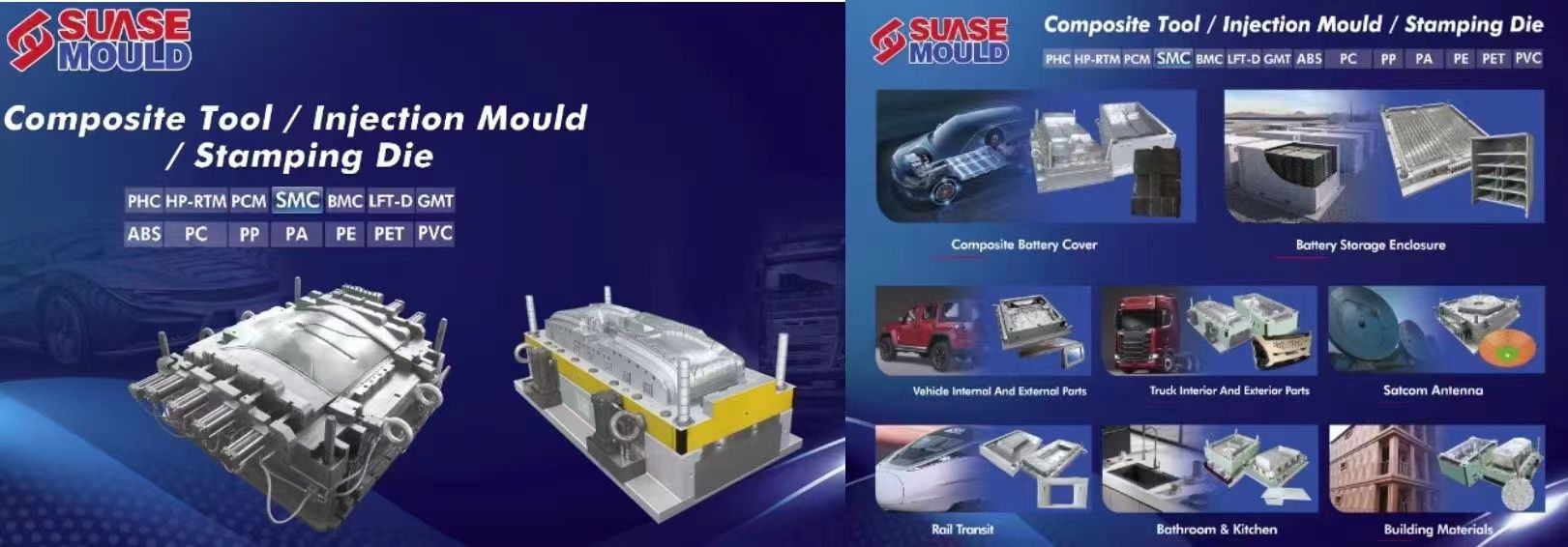Rubber Compression Molding is a fundamental manufacturing process widely used in producing various rubber components. This method is especially favored for its ability to create durable, high-quality parts with complex geometries. In this article, we will delve into the nuances of rubber compression molding, exploring its process, advantages, applications, and how it compares to other molding techniques, including the use of composite molds.
Understanding the Rubber Compression Molding Process
Rubber compression molding involves shaping rubber material by placing it into a heated mold cavity, where it is compressed into the desired form. The process typically follows these steps:
- Preparation of the Rubber Material: The rubber material, often in the form of pre-measured blanks or preforms, is prepared. These preforms are made from raw rubber, mixed with additives to enhance their properties, such as curing agents, fillers, and stabilizers.
- Mold Setup: The mold, usually made from metal, is preheated to a specific temperature. The preheating ensures that the rubber cures uniformly when compressed.
- Loading the Preform: The rubber preform is placed into the mold cavity. The mold is then closed, and hydraulic or mechanical pressure is applied to force the rubber into the shape of the cavity.
- Curing: As the mold is compressed, the heat causes the rubber to cure. Curing, or vulcanization, is a chemical process that enhances the elasticity and strength of the rubber. The curing time depends on the type of rubber and the complexity of the mold design.
- Demolding: Once the rubber has cured, the mold is opened, and the part is removed. The part may require further processing, such as trimming excess material or post-curing, to achieve the desired properties.

Advantages of Rubber Compression Molding
Rubber compression molding offers several distinct advantages, making it the preferred method for specific applications:
- Cost-Effective for Low-Volume Production: Compared to other molding processes like injection molding or the use of composite molds, compression molding is more cost-effective for low-volume production runs. The tooling costs are lower, and it’s suitable for prototyping and custom orders.
- Complex Geometries: This process is well-suited for producing parts with intricate geometries and varying thicknesses. The ability to apply pressure uniformly across the mold allows for the creation of detailed and precise components.
- Material Versatility: Rubber compression molding can accommodate a wide range of rubber materials, including natural rubber, silicone, EPDM, neoprene, and more. This versatility allows manufacturers to choose the best material based on the application’s specific requirements.
- High-Strength Parts: The curing process in compression molding results in parts with high tensile strength and excellent durability. These properties are essential for applications that demand resilient components.

Applications of Rubber Compression Molding
Rubber compression molding is utilized in various industries to produce parts that require excellent elasticity, weather resistance, and durability. Some common applications include:
- Automotive Industry: Rubber seals, gaskets, O-rings, and bushings are critical components in vehicles, providing a seal against fluids, vibrations, and noise.
- Aerospace and Defense: Compression-molded rubber parts are used in aerospace applications for their ability to withstand extreme temperatures, pressure, and environmental conditions.
- Medical Devices: Medical-grade rubber components, such as seals, diaphragms, and valves, are manufactured using compression molding to ensure precision and reliability in medical devices.
- Industrial Equipment: Rubber compression molding is employed in producing parts for industrial machinery, including vibration dampeners, mounts, and protective covers.
Comparing Rubber Compression Molding with Other Molding Techniques
While rubber compression molding offers numerous benefits, it is essential to consider how it compares with other molding techniques like injection molding and the use of composite molds.
- Injection Molding: Rubber injection molding involves injecting molten rubber into a mold under high pressure. It is ideal for high-volume production and allows for faster cycle times than compression molding. However, it requires more complex tooling and may not be as cost-effective for smaller production runs.
- Transfer Molding: Transfer molding is similar to compression molding but involves transferring the rubber material from a chamber into the mold cavity. It offers more control over the material flow and can be used for more intricate designs. However, it may result in more material waste and higher costs compared to compression molding.
- Compression Molding: As mentioned, compression molding is cost-effective for low-volume production, accommodates complex geometries, and is suitable for various rubber materials. However, the cycle times are longer, and it may not be as efficient for high-volume production.

Optimizing Rubber Compression Molding for Quality and Efficiency
To achieve the best results in rubber compression molding, several factors need to be optimized:
- Mold Design: The design of the mold plays a crucial role in the final product’s quality. A well-designed mold ensures even pressure distribution, minimizes defects, and reduces the need for post-processing.
- Material Selection: Choosing the right rubber material is critical to meeting the application’s specific requirements. Factors such as temperature resistance, chemical compatibility, and hardness should be considered.
- Process Control: Maintaining precise control over temperature, pressure, and curing time is essential to achieving consistent quality. Advanced process monitoring systems can help detect and correct issues in real time.
- Post-Processing: Depending on the application, post-processing steps such as trimming, post-curing, and surface treatments may be necessary to meet the desired specifications.
Conclusion
Rubber compression molding remains a vital manufacturing process, particularly for producing high-strength, complex rubber components. Its cost-effectiveness, material versatility, and ability to create intricate designs make it indispensable in various industries. By understanding the process, optimizing key factors, and selecting the appropriate materials, manufacturers can ensure the production of high-quality, durable rubber parts that meet the demands of their applications.
As the industry evolves, rubber compression molding continues to adapt, incorporating new materials, technologies, and techniques to enhance its efficiency and expand its applications. Whether in automotive, aerospace, medical devices, or industrial equipment, rubber compression molding is set to remain a cornerstone of modern manufacturing, especially when paired with advanced composite molds for specialized needs.
